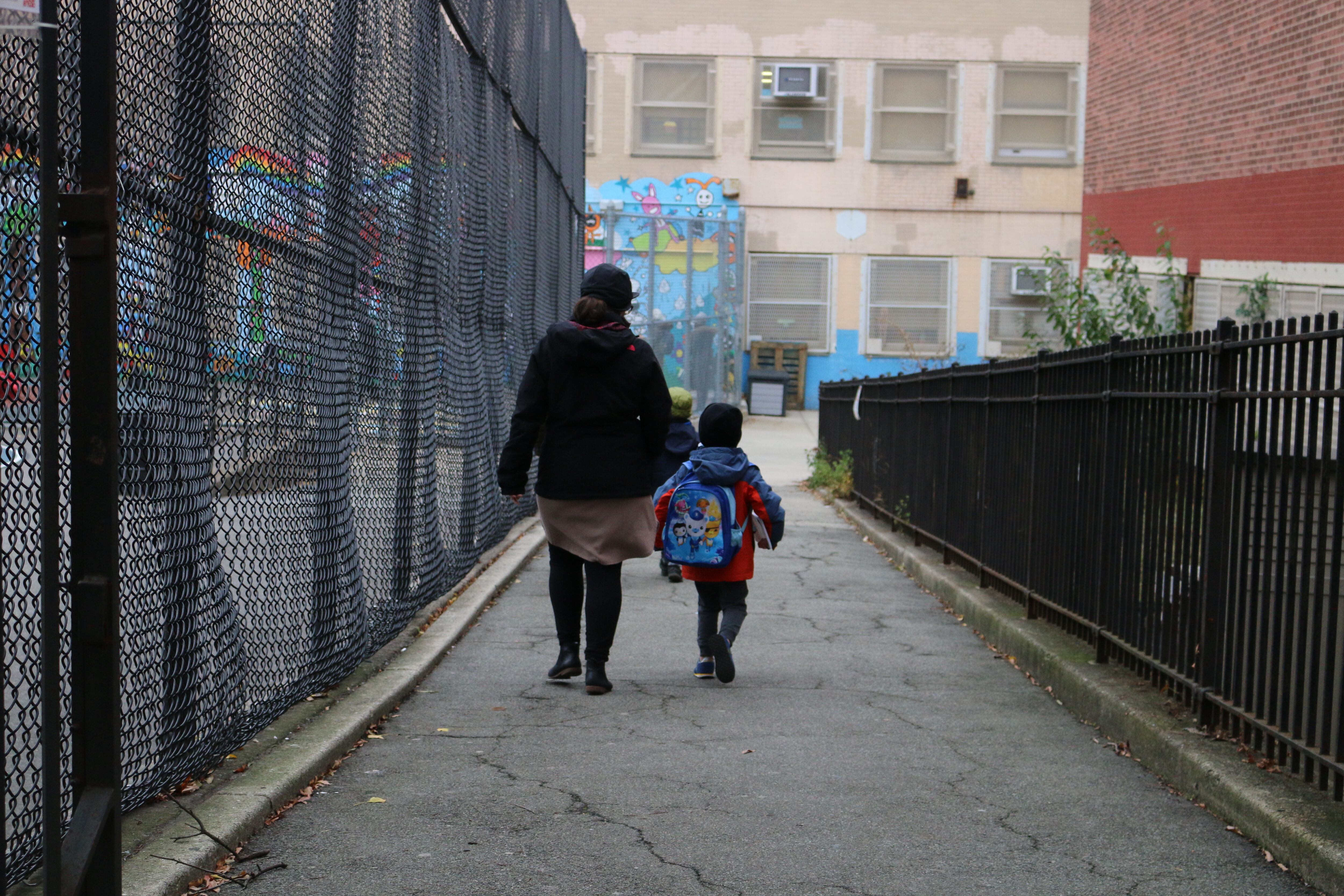A searchable database of school-level enrollment trends is at the end of this article.
New York City school enrollment declines have accelerated during the pandemic, but the losses have not been distributed equally across schools or demographic groups, according to state data released this week.
About three quarters of the city’s public schools saw enrollment declines this year, with nearly 23% losing 10% or more of their students, state figures show. Black and white students in grades K-12 saw the largest drops of all racial groups this school year, declining about 7.5% each. Asian American student enrollment dropped 5%. For Latino students, the drop was 4.5%.
Although some schools with more affluent students have seen significant enrollment declines during the pandemic, with families decamping to the Hamptons or enrolling in private schools, drops among low-income students were far more significant. Enrollment among low-income students fell nearly 7% this year, more than twice the decline of students who are not classified as living in poverty.
Enrollment among students with disabilities, many of whom have struggled with disruptions to in-person services during the pandemic, fell nearly 8% — possibly reflecting significant reductions in referrals for special education services during the pandemic.
The state figures show that overall enrollment in the city’s traditional public schools dropped 5.6% this year among students in grades K-12 to roughly 821,000 students, according to a Chalkbeat analysis. Since the pandemic hit in the 2019-2020 school year, K-12 enrollment has dropped by 9%. City officials noted the state data does not include a slew of nontraditional programs, so the figures are lower compared with the city’s own enrollment tallies.
Due to differences in how city and state education departments report preschool enrollment figures, Chalkbeat has excluded those numbers from its analysis of demographic data. Overall enrollment declines are less significant if preschool is factored in, largely because the city used an influx of federal dollars to expand its prekindergarten offerings for 3-year-olds.
Including pre-K, enrollment is down just 1.9% with 938,000 students in the city’s public schools, not including charter schools, according to city figures released in October.
Enrollment declines matter because the majority of a school’s funding is allocated on a per-student basis. And if a school ultimately enrolls fewer students than the city projected, they may be forced to hand funding back, a practice that generated criticism last school year, as some schools owed hundreds of thousands of dollars.
City officials wound up allowing schools to keep the funding they owed, and that policy will continue this school year, officials said. Reduced funding based on lower enrollment may also be offset to some degree by a boost to school budgets spurred by federal relief money and a long-term increase in state funding.
Student exodus
The state statistics don’t reveal what is causing the declines, which have persisted since well before the pandemic, though the drop has accelerated over the last two years. Some caretakers may have opted to home-school their children out of fear of the coronavirus or the disruptions that classroom quarantines have caused. Others may have opted for charter schools, which have seen enrollment increase. Some families may have left the city entirely. City officials also said that declining birth rates are playing a role.
School systems across the country have also experienced enrollment declines this year, including nearly 6% in Los Angeles and 3% in Chicago, the nation’s second and third largest districts.
At the Earth School in Manhattan, enrollment declined by about 18% to 241 students, state data show. Jia Lee, a fourth and fifth grade teacher, said the drop has meant her classroom has 28 students instead of a more typical 21-24, in part because the school can’t justify hiring a teacher to staff an additional classroom.
“We were told we couldn’t keep our class sizes low because it’s a budgetary issue,” she said, a challenge given the school’s focus on evaluating students narratively instead of with grades. She added that the enrollment drop has not affected the school’s ability to provide art or other programs.
In line with national trends, enrollment declines in New York City have been sharpest in the younger grades. Overall, enrollment in grades K-8 fell 7%, compared with just 2.5% among high schools. Kindergarten enrollment fell nearly 4%, lower than last year’s nearly 11% drop. But first through third grades still saw higher-than-average declines of between 7% and 9%.
For schools that have lost significant numbers of students, there are likely multiple factors at play in and outside of the building. Some parents at the Earth School have opted to move out of state or home-school their children, Lee said.
At Brooklyn’s P.S. 295 which lost about 22% of its students over the past year, and about 15% the previous year, there was a confluence of events that may have led to the decline, families said.
A change in leadership last year may have given some parents pause, and the year before that a beloved parent coordinator left. That parent coordinator was a big help to the school’s Spanish-speaking families who needed free after-care — which the school does not offer on site. He would bring some students to a free program at a nearby school, said P.S. 295’s PTA president Tina Habib. Without that, some families may not have been able to send their children to the school.
Another reason: The school has been embroiled in a high-profile fight since this summer when officials removed a Black Lives Matter and Black Trans Lives Matter mural with a quote from feminist author Audre Lorde: “Your Silence Will Not Protect You.”
“People have expressed concern about the reduced numbers,” Habib said, “But the response from the administration has been: ‘It’s COVID. This is normal. All schools are losing students. Don’t worry about the funding because of the stimulus money.’”
High schools serving most vulnerable take a hit
But even as elementary schools are bearing the brunt of enrollment declines, high schools designed to serve students at risk of dropping out have also seen steep drops.
Among the city’s roughly 50 transfer high schools, which typically serve students who are older and behind in credits, the average enrollment decline was 10%.
At Brooklyn Frontiers High School, a transfer school that aims to graduate students who have struggled with traditional schools, enrollment has declined about 24% this year to just 127 students, state data show.
Eric Wilson, who teaches English, computer science and math, said there have been some unexpected benefits to the drop, including smaller class sizes where teachers can offer more individual support.
But the school is also working to recruit more students because low enrollment can pose an existential threat as it becomes harder to hire staff and run a full set of programs. This year, the school struggled to field a basketball team owing in part to logistical complications related to the pandemic and also since they had fewer students to draw from.
“It’s all hands on deck,” Wilson said. “We’re going out to neighborhoods and business and posting flyers.”
The state data also reveals significant differences by geography. Brooklyn’s District 18, which includes Flatbush and Canarsie, saw enrollment plunge by 11%. In District 9, which includes the South Bronx, enrollment fell 9%.
At the other end of the spectrum, enrollment in Brooklyn’s District 32, which covers Bushwick, fell by less than 1%. District 31, covering Staten Island, also saw low attrition at roughly 2%.
Below you can find a searchable table to see how enrollment trends are playing out across the city:
Amy Zimmer contributed reporting.






